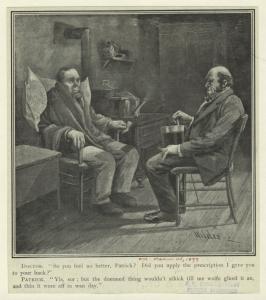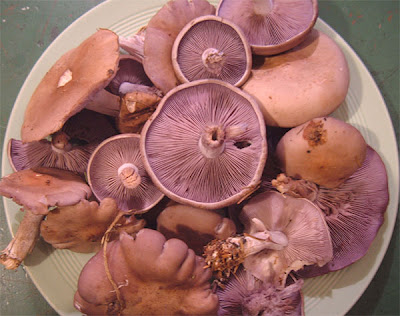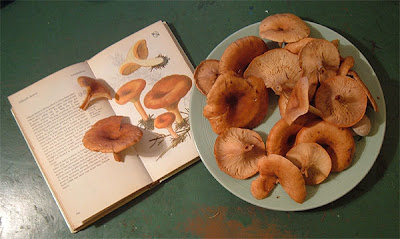by Harvey Max Chochinov
A senior colleague recently shared with me the trials of going through a bout of cancer treatment. Physicians are not known to make the best patients and the transition he described was not an easy one. At one point he said, “I wanted to hang a sign over my bed saying ‘P.I.P.’ — Previously Important Person.” To be frank, I was astounded. This man is not only a highly respected and seasoned clinician, but an internationally lauded researcher and medical leader, whose accomplishments have garnered various recognitions and lofty acclaim. And yet, being a patient, in spite of what he described as excellent care, quickly led to feeling that “who he was” was largely overshadowed by “what he had.”

Source: New York Public Library
This encounter started me thinking about the challenges of being a patient. Those of us who practice medicine spend our entire career honing skills to look after patients. Yet, no one wants to be a patient, because patienthood costs, and the more care you need, the higher the cost. Most of us are prepared to pay whatever it takes to restore health or receive some modicum of comfort or healing. But let there be no doubt, there is a price and ‘P.I.P.’ seems to implicate just what kind of emotional currency is at stake.
The word patient comes from the Latin patientem, meaning someone who is sick or suffering. The word patience — to bear or endure without complaint — shares the identical Latin etymology. Perhaps this common derivation suggests that it takes patience to be a patient. But what is it that patients must bear and endure without complaint? Think of even your most trivial recent health care encounter. Having your call put on hold; being kept waiting for an appointment; having to disrobe or expose private information; any of these might lead you to bemoan that you felt “just like a patient” — without a doubt, the most common critique of any health-care encounter. Feeling “like a patient” means feeling defined based on a problem or diagnosis. Personhood thrives on the expression of individual identity and being able to exercise freedom and choice. Patienthood is based on diagnostic specificity; it demands adherence to certain clinical or institutional conformities and routines, in return for which it provides organ or disease specific, evidence-based options.
A woman I helped look after many years ago with leukemia was admitted for treatment to our city hospital. Being young and fiercely independent, she struggled, not merely with having to face a life threatening illness, but the sudden assault on her sense of who she was. Almost overnight, she had to relinquish her freedom and submit to strict infection controls, including isolation on the bone marrow transplant unit. Like any patient, she was assigned a chart number, given a standard plastic wrist identification bracelet, and issued the usual, drab hospital garb. Her treatment, tailored according to detailed laboratory findings and genetic markers, was highly aggressive and invasive. One morning after having encountered her share of hardships, including total hair loss, nausea and various nasty complications, she emerged from her room wearing a beautiful, full-length blue satin nightgown. Those of us who worked closely with her realized immediately that this was no frivolous gesture. In fact, this was a way of asserting herself, a way of saying: “This is who I am,” “I am more than my white counts,” “Please, see me.”
Similarly, Jean Dominique Bauby, the former editor of Elle
All last week I was on holidays! And it was awesome. Spent the week at a cottage at Grand Beach, MB. Strangely, we had a heat wave at the beginning of the week, and then it cooled right down and it was cold! I really can't complain cuz the charming, warm weather has returned, although not at the heat wave magnitude. Not sure how I feel about that… =)
I don’t know how many people know this about me, but I love to run. And I woke up every day on my holidays at 6:30 a.m. just so I could beat the heat. My running route was along the water on the beach. I love running on the beach. There’s nothing like it.
I’m back at work this week, but working towards yet another week of holidays, next week. Très sah-weeeet!
So I have discovered that I am truly crazy about Twitter and have become a wee bit addicted. Okay, okay, I’m a lot twaddicted. Wow, it’s worse than I thought… Anyway, tweeting is always on my mind now. Everything I do, or see, or hear, or say, is fodder for my next tweet. My friends may wanna keep that in mind. Hee hee. =D
So my new writing exercise is based on my thoughts around the fantasy genre image I chose. It was really difficult to go in only one direction, cuz my mind was buzzing with this image. Check out the exercise and enjoy!

0 Comments on I am... as of 1/1/1900
 Spring in northern climes such as ours is heralded by the return of birds. For us, the honking of geese in the skies are a sure sign of the season. When we lived in Alberta, we sometimes went out into the countryside to see the return of the snow geese. Their flocks would fill the sky in swathes of white and blanket the fields on the ground. In Manitoba, it is mostly Canada geese that make their presence known in spring. Just the other day, I saw a pair gracefully wafting along the edges of a nearby creek.
Spring in northern climes such as ours is heralded by the return of birds. For us, the honking of geese in the skies are a sure sign of the season. When we lived in Alberta, we sometimes went out into the countryside to see the return of the snow geese. Their flocks would fill the sky in swathes of white and blanket the fields on the ground. In Manitoba, it is mostly Canada geese that make their presence known in spring. Just the other day, I saw a pair gracefully wafting along the edges of a nearby creek.
Two books I have read to my children about migrating birds and spring are Swan Sky by Tejima and The Wonderful Adventures of Nils by Selma Lagerlof (illus. Lars Klinting.) Swan Sky is a picture book that tells the story of a young swan who is unable and unwilling to make the migratory flight northwards in spring. It is a poignant and simple story, beautifully illustrated with the woodcut prints of the author. The Wonderful Adventures of Nils is a longer book and is a children’s classic in Sweden. Commissioned by the National Teacher’s Association in 1902 as a reader for geography, the story of Nils took Lagerlof three years to research and write. Nils is a mischievous farm boy who is punished for his cruel acts to the farm animals by being turned into a wee tomte. In order to escape the anger of his parents, he hitches a ride on a domestic goose who yearns to be like the wild geese flying northwards in their annual migration. On this journey, Nils tours the provinces of Sweden, experiencing adventures that make him grow up and become a responsible young man.
What is spring like where you live? What birds do you see and hear in your part of the world?
 This year’s Manitoba Book Award nominees were recently announced. I was pleased to see Brenda Wastasecoot’s Granny’s Giant Bannock (illustrated by Kimberley McKay-Fleming) nominated for the McNally Robinson Young People’s Book award. My kids and I attended the launch of this book at Aqua Books in Winnipeg in December. We all took delight in this wonderful story narrated by Wastasecoot herself.
This year’s Manitoba Book Award nominees were recently announced. I was pleased to see Brenda Wastasecoot’s Granny’s Giant Bannock (illustrated by Kimberley McKay-Fleming) nominated for the McNally Robinson Young People’s Book award. My kids and I attended the launch of this book at Aqua Books in Winnipeg in December. We all took delight in this wonderful story narrated by Wastasecoot herself.
Granny comes to visit her grandson Larf who is studying at university in Brandon, Manitoba. It is Granny’s first trip to the big city and Larf shows her around. Granny does not know English; she speaks Cree and must rely on Larf who understands only some of Granny’s words. Until now, this has not been a problem but when Granny decides to make bannock, Larf has trouble finding the ingredients to make the delicious treat. Instead of buying baking powder as Granny tells him in Cree, Larf buys yeast. The result? A giant bannock that grows so big it rolls out of the house and into the city of Brandon.
My children loved this story with its hilarious build-up and ending. Bannock is a much beloved food of the aboriginal people of the prairies. As Wastasecoot notes in her prologue:
Bannock was an important supplement to our soups and stews of caribou, moose and fish. It was also a favorite snack and could easily be whipped up for visitors and their children.
More importantly though was the message of the story which was summed up in the form of a question posed to the reader. “What do you think Larf should do next time? What could Granny do to help him?” The answer? As Wastasecoot said at the launch, “Teach him Cree!” Granny’s giant bannock, the result of a misunderstanding, turns out to be a lesson in the importance of maintaining one’s language and customs.
Another mushroom hunt, on a dull, damp Sunday afternoon, with the woodlands glowing softly against the grey sky in shades of saffron and mustard. It began to rain. I found an old tube of extra strong mints in my anorak pocket. Even less fungal activity than before, but the pine enclosure did not let us down - a beautiful lavender crop of Wood Blewits, which should last for a few days...

And nearby, a large congregation of these fellows. Yet again my trusty mushroom book seemed to have the perfect match - Clitocybe Inversa. Description - tick. Picture match - tick. Growing in spruce land - tick. But we have never eaten this before. Back home with a healthy pink glow and mugs of hot chocolate, we got out our other fungi books and Googled. The first thing we do before trying a new species is to check, check and check again - and to make sure it can't be confused with anything poisonous.

Now a little confusion set in. It probably was Clitocybe Inversa, but another book had an identical looking picture labelled Clitocybe Flaccida. Googling almost made the situation worse - it also looked identical to Lepista Inversa, which also ticked the right boxes? Oh, hang on, apparantly, Clitocybe Inversa has a variant called Clitocybe Flaccida. But Wiki says that Clitocybe Flaccida is the new name for Lepista Flaccida...and they all look the same...ah, that would be something to do with there being a 'generic revision' between Lepista and Clitocybe - so they used to be different but now they are the same. According to the boffins. But the good news was whatever you choose to call it, they are edible. Conclusion - much easier to call it by its common name - Tawny Funnel Cap. Cuts to the chase and tells it how it is; it's tawny. It's funnel shaped. And very nice when fried, and served with meatballs and gravy. Andy said they were a bit tasteless. I said they were free.








 This year’s
This year’s 


You can't get much better than free - I bet they tasted amazing, just for the effort of all that research!
Do you ever find ceps?
Forget eating it - where are my paints, that is absolutely stunning!
Dear PG ... this is fascinating to me. I feel as though I am taking a course in "mushrooms" - and I love it. I wonder if we have these same kinds of mushrooms in the States and if I went in search - would I find any? Mushrooms are great to eat, to photograph, to paint and their generic names are absolutely endearing. I think I will ask for your mushroom book for Christmas.
These mushroom photos are stunning... and your writing about them makes me want to go tramp in the woods to find.... something I can drop in a pot. Like Becca said, it's like taking a class in "Mushrooms 101".
Jenny
OOOO! So beautiful! Thanks for presenting them so artfully as to make us all pay attention to these small wonders that would have gone unnoticed...How's that book I keep naggin gyou about going???xo steph
Waht beautiful mushrooms, lovely photo's G.
P.x
What beautiful photos. We were so greedy we just ate ours!
Ah.. what a lovely mushroomy tale :) Did you know that puffballs are excellent for staunching bad bleeding? x
I love your mushroom pictures. We've got a variety of fungi growing along the side of the lane that I need to take some photo's of. There's also some edible mushrooms on the top field that our neighbour eats. And your right free food is the best food ! ~ love Julia x
Thank you so much for your very helpful answer to my questions about mushrooms on my blog. I do actually see a ton of wild mushrooms on my walks with the dogs, but now I know not to just go out and buy the guide you were mentioning in your post but find one specific to western PA. Thanks for taking the time to let me know. Hope you aren't too, too busy preparing for the holidays.
Great pictures, I can almost smell and taste them. Hope the lengthy research was worthwhile.